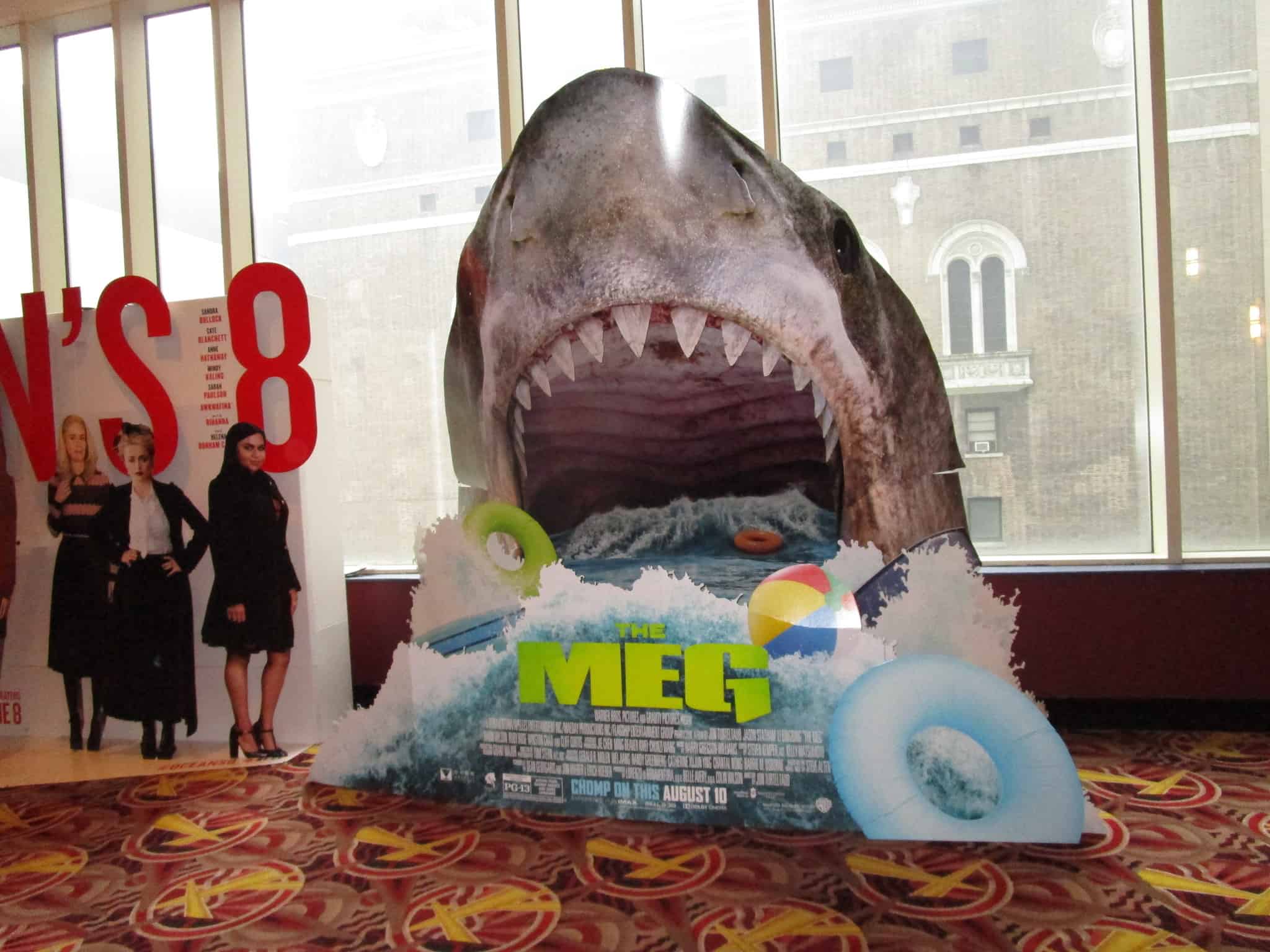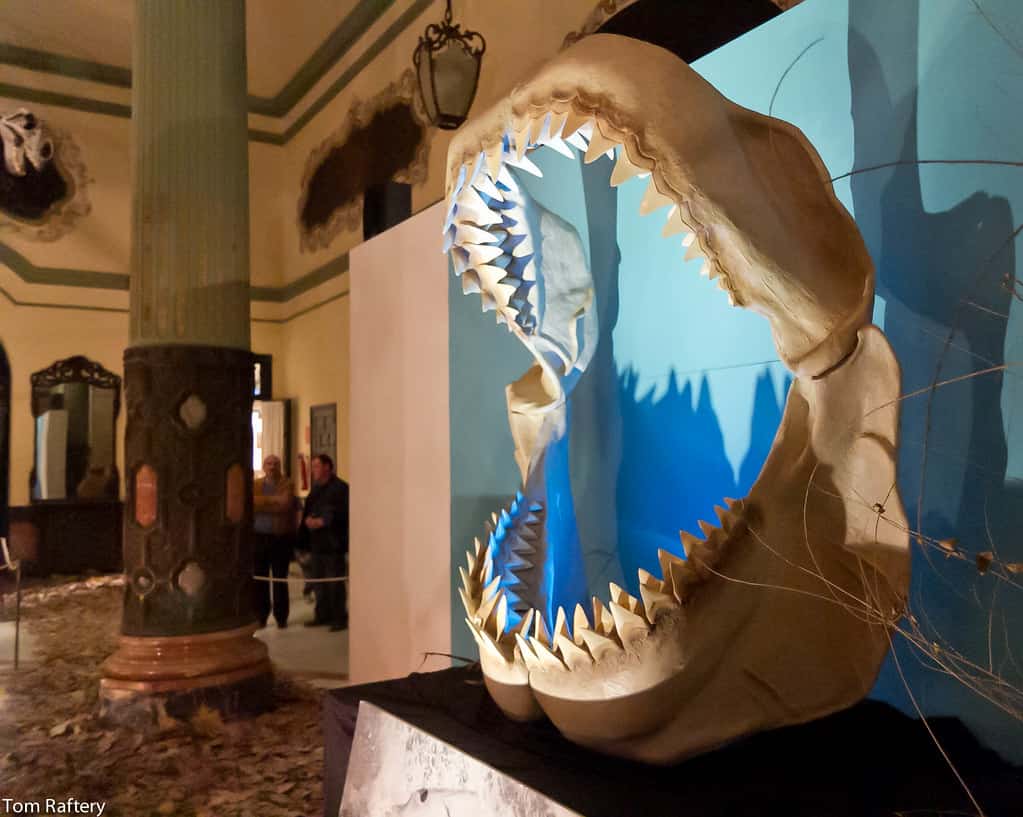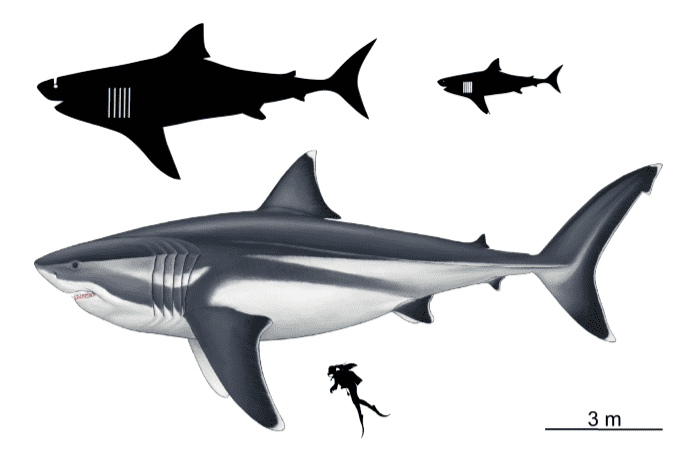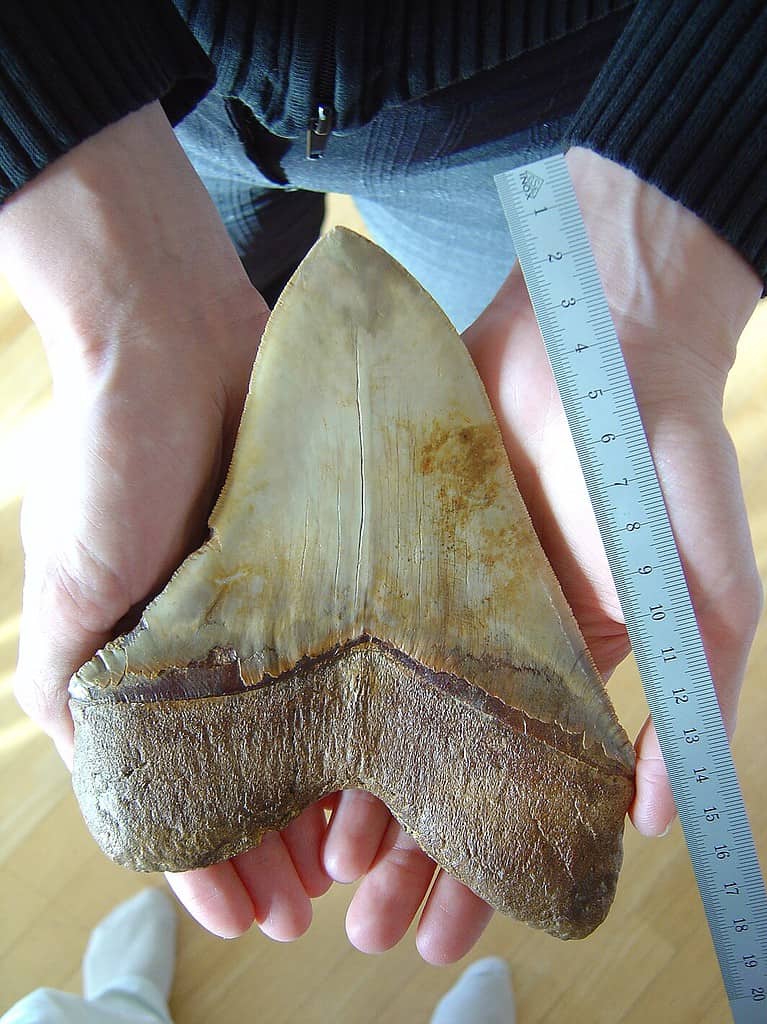So a movie called Meg 2 is out, featuring Jason Statham as the main character and a bunch of megalodons as secondary characters (or something). I haven’t seen the movie, and apparently, even researchers who some inspired characters wouldn’t see it sober. But the movie brings up an interesting point: how do we know whether Megalodon is still alive?
After all, we haven’t mapped the vast majority of the ocean, so how can scientists be so sure that Megalodon is extinct? Well, it is extinct — and Jason Statham movies won’t bring it back. So without further ado, here’s Meg 2… I mean here’s how we know Megalodon is extinct.

Megalodon is real — but fossils end over 2 million years ago
Megalodon (Carcharocles megalodon) is the largest shark we know of. It reached a whopping length of 18 meters (59 feet), and some studies suggest that the maximum length could be as high as 20.3 meters (67 ft). It’s closely related to the great white shark, but larger and more fearsome.
Much of what we know about Megalodon comes from fossilized teeth. Megalodon teeth measure over 180 millimeters (7.1 in) in slant height (diagonal length). They’re the largest teeth of any known shark species. The earliest Megalodon fossils date from 23 million years ago. But the fossils end abruptly 3.6 million years ago.
Simply put, no fossils were found in more recent geological layers. Given that before this, Megalodon fossils were fairly common, if Megalodon was still alive, you’d expect some fossils from it.

No bite marks
OK, let’s say you’re not convinced by the lack of fossils and you trust what Shark Week or whoever makes these movies tell you. Here’s another piece of evidence: there are no bite marks from Megalodon in the past 3 million years.
Megalodon would have been a fearsome predator, but maybe some of its prey escaped — in this case, it would bear bite marks. Even if it hunted down and kills its prey, whale bones would still bear bite marks. Scientists haven’t found any such bite marks, which is consistent with the lack of fossils.
No sightings
Megalodon wasn’t particularly picky about where it lived. It had a cosmopolitan distribution and its fossils have been excavated from many parts of the world, ranging from Europe to Africa and the Americas to Australia. Most commonly, it was found in subtropical and temperate latitudes — where there are a lot of people.
If there was any Megalodon around, you’d expect some sighting, someone to report seeing it. People have looked, but they found nothing. Probably, because there’s nothing to be found.

No sustainable population
It’s not like one or two individuals could have carried the population around for 3 million years. You need more than a Megalodon Adam and Eve to sustain a population. You’d need a considerable number of individuals to make a sustainable population. In other words, if Megalodon is still alive, there should be plenty of individuals.
This once again boils into the previous mentions: if there’s a sustainable population, you’d expect evidence, whether in the form of fossils, bite marks, or even sightings. There’s none of that.
Current ecosystems can’t support it

Megalodon was an apex predator. Nay, it was a super apex predator. According to recent research, it was higher up the food chain than any marine predatory in history. Its impact was so great that if it were alive today, it would be obvious.
“We’re used to thinking of the largest species — blue whales, whale sharks, even elephants and diplodocuses — as filter feeders or herbivores, not predators, but Megalodon and the other megatooth sharks were genuinely enormous carnivores that ate other predators, and Meg went extinct only a few million years ago,” said Emma Kast, who conducted the research at Princeton University and it now based at Cambridge’s Department of Earth Sciences.
“If Megalodon existed in the modern ocean, it would thoroughly change humans’ interaction with the marine environment,” said Danny Sigman, who led the new nitrogen analysis at Princeton University.
Simply put, current ecosystems can’t really support a predator like Megalodon.
Commercial fishing found no trace of Megalodon
Commercial fishing exploits basically every ocean environment on Earth. Commercial fishers find some of the craziest creatures you can imagine, from deep sea abyss fish to small shrimp that are unknown to science. But they found no trace of a shark that weighs over 120,000 pounds (60 tons).
We have a pretty good idea of how it went extinct
It’s always difficult to figure out why a species went extinct millions of years ago. But in the case of the Megalodon, researchers have a fairly good idea.
There were multiple issues. Firstly, it was natural climate change. Temperatures dropped, leaving many creatures scrambling to adapt. Even if Megalodon itself could have adapted, its prey wouldn’t — and for an apex predator, when its prey is in trouble, that’s bad news. As its habitat was restricted and its prey suddenly became less available, the Megalodon would have likely struggled.
Then, as a 2022 study suggested, Megalodon had another problem: the great white shark. The great white shark is smaller and doesn’t need as much prey as the Megalodon. In the climate cooling situation, the smaller white sharks could have adapted in a better way, leaving Megalodon stranded at the top of the food chain.
So, is Meg 2 an enjoyable movie? I have no idea. It’s possible, and more likely than Megalodon being alive. Because the premise of the movie is just bollocks.









